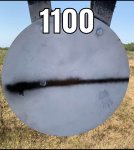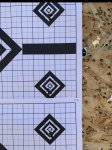Node defined as a velocity flat spot is BS, maybe you get one most likely you will not.
And if you do get one 99% of the time you shoot the test again you will get different results.
I simply look for point of impact consistency for a range of consecutive charge weights that produce the velocity I am looking for.
If I can get say a charge of 41.1g to 41.5gr to group in the same spot that is my load. I will pick 41.4 and 41.3 and play with the
seating depth.
The chart you posted, if you are just picking out of a hat then why not just pick the highest velocity with lowest SD and your done.
Will the random load you picked give you consistency?
and @Campguy308
I can take every charge weight out of that charge, toss a berger bullet on top with about .020 jump, dope the rifle and not miss a practical size target out to 1k because of vertical.
I can then take that BC or curve pretty much anywhere, check the velocity, input it into software and it will still hit every practical size target.




